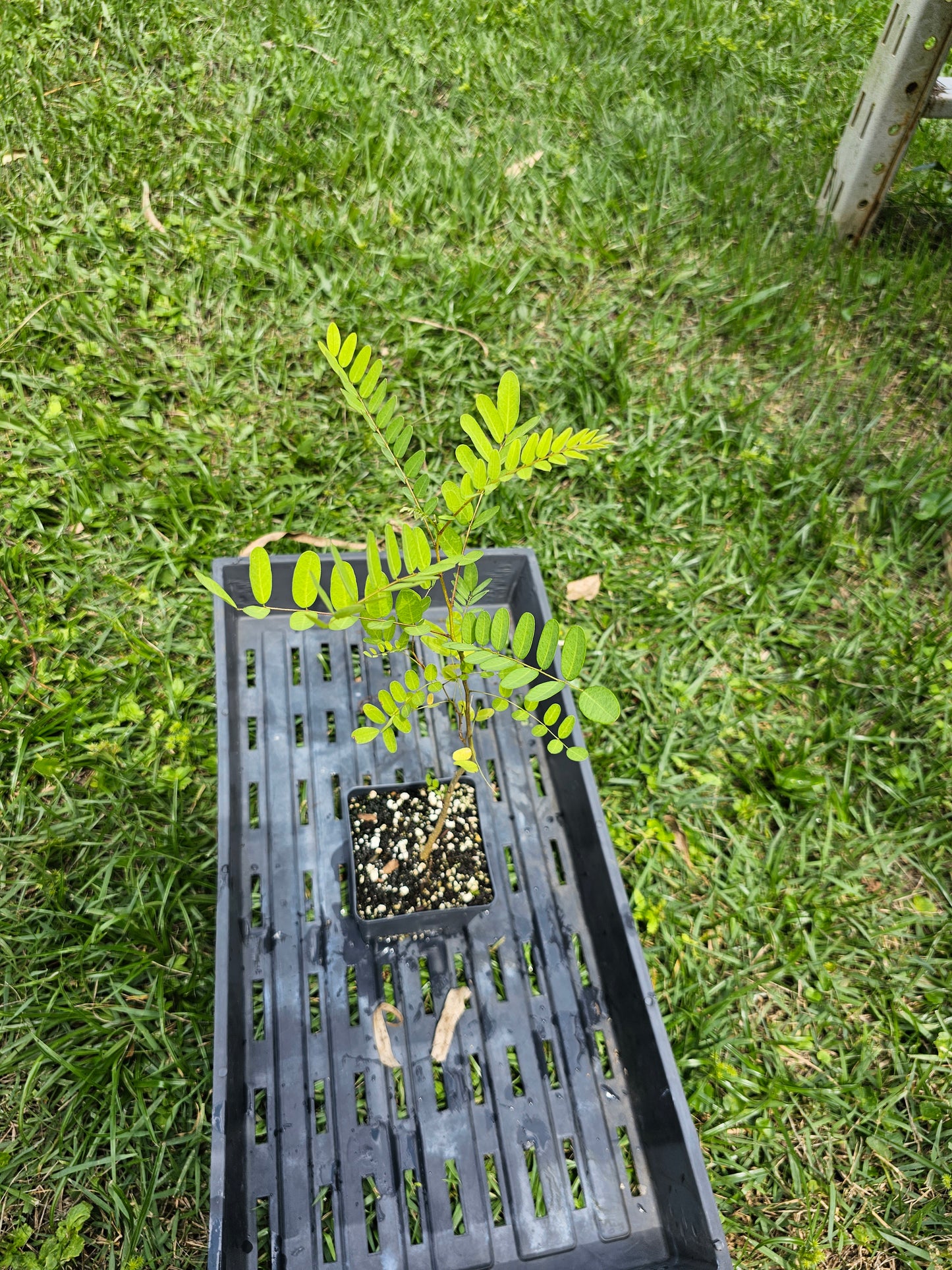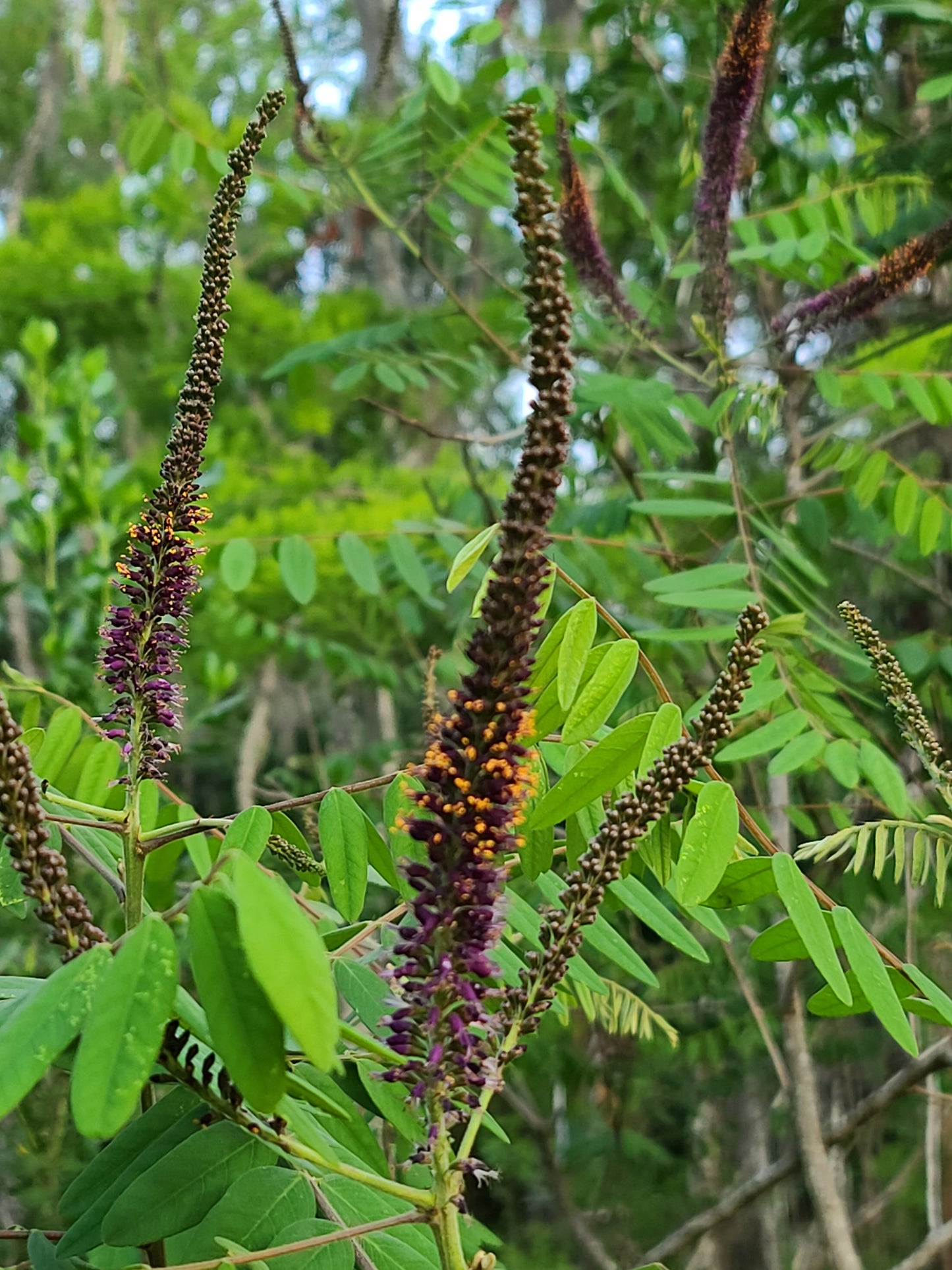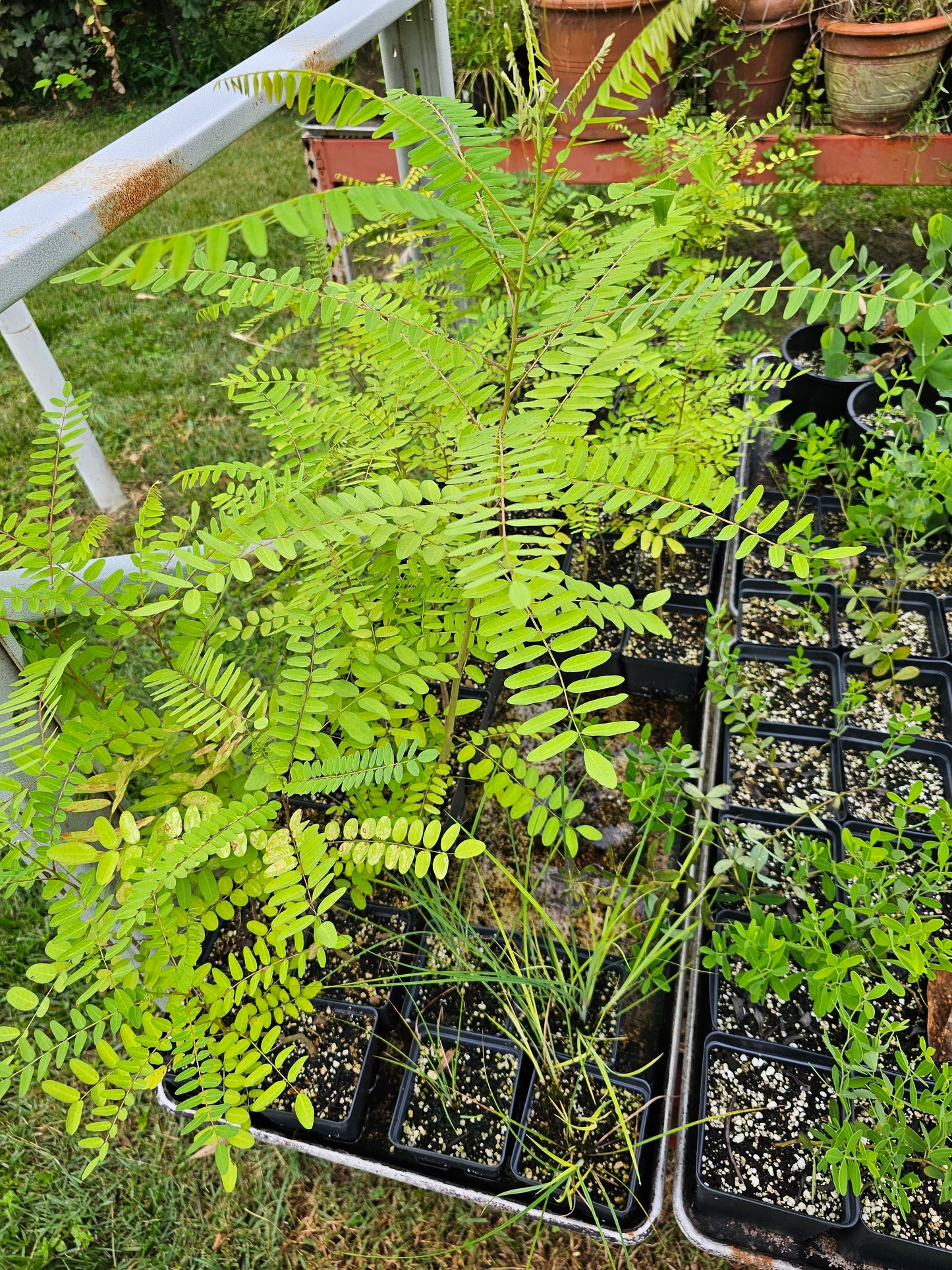Gnarly Nursery
Amorpha fruticosa, Bastard False Indigo
Amorpha fruticosa, Bastard False Indigo
Out of stock
Couldn't load pickup availability
Amorpha fruticosa
Synonym(s)
(Amorpha curtissii, Amorpha montana)
Common Name(s)
Tall Indigo-bush, Bastard False Indego
- Phonetic Spelling
- ah-MOR-fah froo-tih-KOH-sah
- Description
- False Indigo (Amorpha fruticosa) is a densely branched woody shrub with a striking spring and summer floral display. The tightly packed terminal spikes are comprised of many dark purple, one-petaled flowers that bear contrasting yellow to orange anthers. Leaves are alternately arranged and pinnately compound. Leaflets are elliptic with entire margins and are oppositely arranged on the leaf stalk. The leaves give the plant a feathery appearance. Seed pods are glandular and curved.
False indigo occurs naturally in alluvial forests, wet and coastal hammocks, cypress pond edges, and along stream and river banks; it can sometimes be found in scrub as well. It attracts many pollinators and is a larval host for the Silver-spotted skipper (Epargyreus clarus), Southern dogface (Zerene cesonia) and Gray hairstreak (Strymon melinus) butterflies.
False indigo is also known as bastard indigo, bastard false indigo and desert false indigo. The genus name Amorpha comes from the Greek amorphos, or “without form,” and refers to the flowers having only one petal, unlike most flowers in the pea family.
- Family
- Fabaceae
- Native Range
- NB west to WA, south to s. FL, TX, s. CA, and Mexico. (This is from Florida stock so it is doubtful it would do well too far to the north.)
- Hardiness Zone(s)
- 4a --to-- 9b
- Lifespan
- Perennial, Woody
- Habitats
- Riverbanks, forests, woodlands, marsh edges, occasionally in scrub
- Exposure
- Full Sun --to-- Part Shade
- Growth Habit
- Tall sparse shrub.
- Soil Texture
- Acid, Alkaline, Clay, Organic Rich (Humus), Organic (Muck), Sand, Well Drained
- Propagation
- --Seeds
--Cuttings - Moisture
- Usually moist, occasional inundation --to-- Short very dry periods
- Salt Water Tolerance
- Tolerant of inundation with brackish water.
- Salt Spray Tolerance
- Some tolerance to salty wind but not direct salt spray.
- Attracts
- Bees, Butterflies, Moths, Pollinators, Songbirds
- Recommended Uses
- Native Garden, Native Planting, Naturalized Area, Pollinator Gardens, Rain Garden, Restoration Projects, Showy Flowers, Stormwater Management, Woodland
- Pot Size
- Trade Gallon (about 3 quarts)
Share





